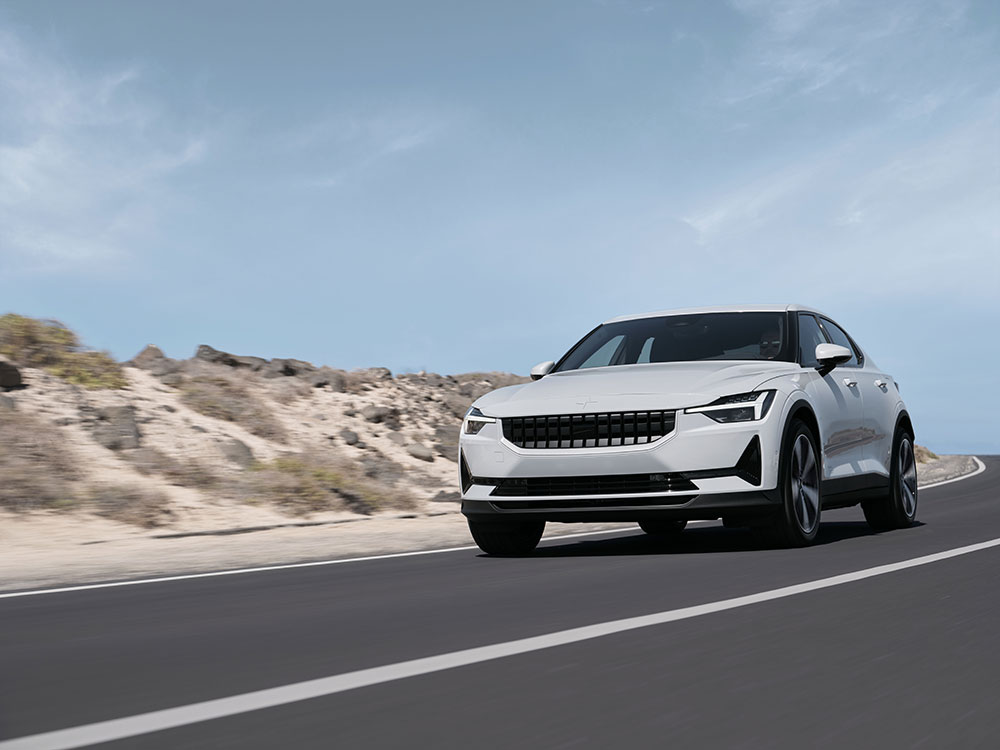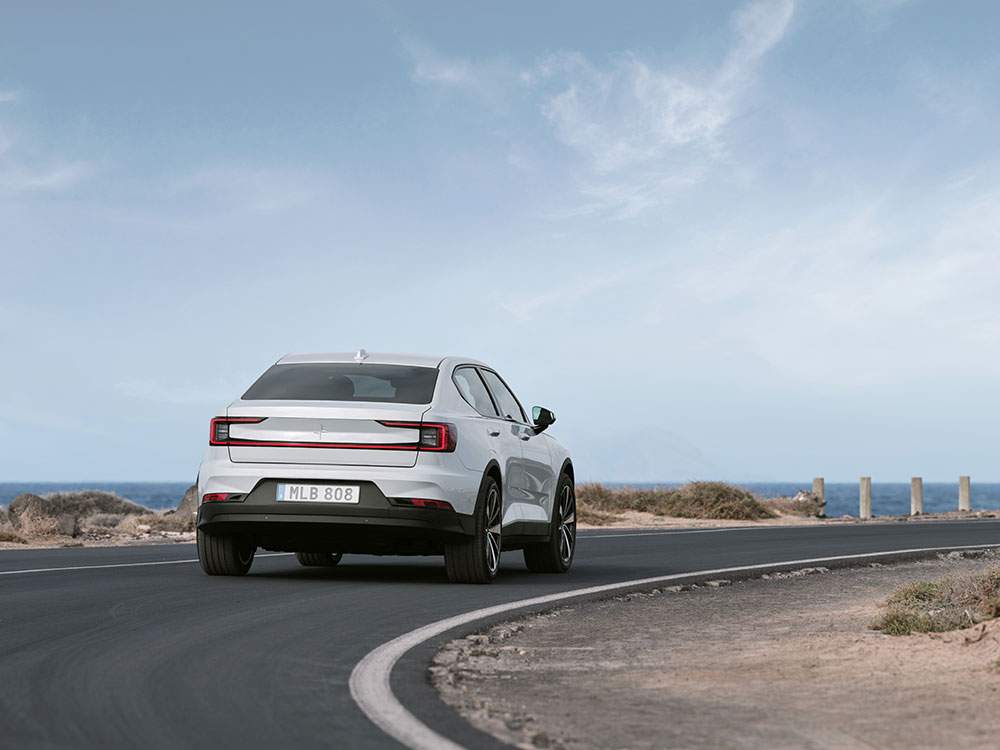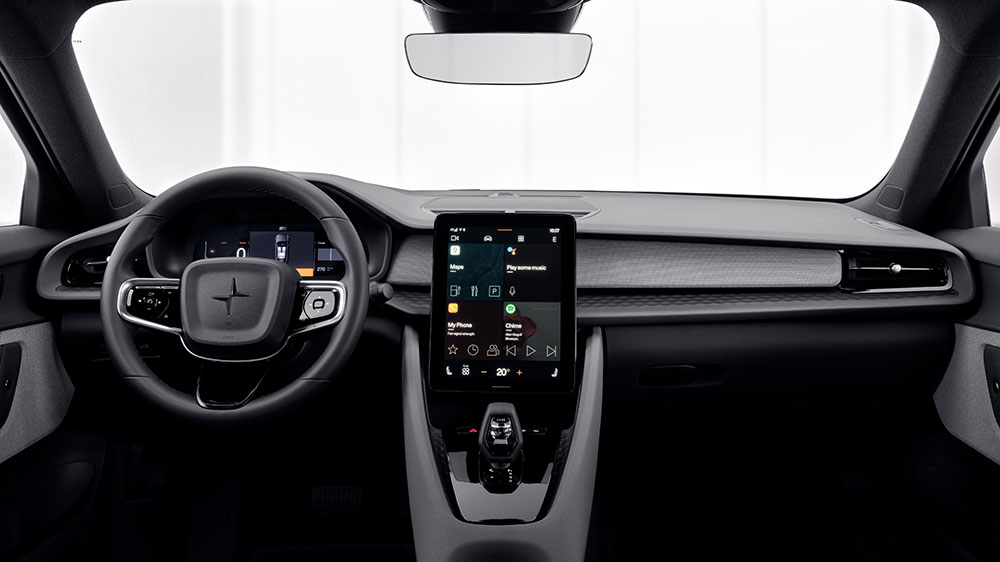Polestar 2 (Long Range Single Motor) review

Ask the CEO of any established automotive brand if Australia, already one of the world’s most crowded new vehicle markets, needs more nameplates competing for consumers hearts and minds, and the answer is likely to be a resounding ‘no’.
But still they come (with apologies to H.G Wells’ The War of the Worlds.)
The newest automotive brand to make landfall in Australia is Polestar, the dedicated electric vehicle brand founded by Volvo Cars and Geely Holding.
Headquartered in Gothenburg, Sweden, Polestar shares technological and engineering synergies with Volvo but is a stand-alone brand.
Established in 2017, Polestar has already launched in 14 global markets across Europe, North America and China, with Australia one of five new markets added in the Asia Pacific region during 2021.
The Polestar 2 is the company’s first fully electric, high-volume car and journalists were recently given a brief opportunity to sample its wares, ahead of an official on-sale date of January 2022.
Like its key rival Tesla, Polestar is committed to an online-only sales model, although the company promises there will be a physical presence via Polestar ‘spaces’ and ‘destinations’ in various cities.
Available in a simple three-variant line-up, each with the option of three options packs, the Polestar 2 range includes the Standard Range Single Motor ($59,990 MRLP), Long Range Single Motor ($64,900 MRLP) and Long Range Dual Motor ($69,900 MRLP).
The Standard Range features a single electric motor and 64kWh battery, providing outputs of 165kW/330Nm and a range up to 440km.
The Long Range single motor features the same electric motor but a larger 78kWh battery, delivering slightly increased outputs of 170kW/330Nm and an expanded 540km range.
Finally, the Long Range Dual Motor gets the same 78kWh battery, but a reduced range of 480km, thanks to its twin motors producing a thumping 300kW/660Nm and consuming a higher 19.4 kWh/100 km versus 17.1 kWh/100km for the single motor version.
In addition to standard features like vegan upholstery, Android Automotive OS-powered infotainment system with Google built-in and avant-garde interior and exterior design, the Polestar 2 models come with the option of three optional equipment packages – dubbed Pilot Pack, Plus Pack and Performance Pack.
.jpg?rev=57cd82b9a96245d790d55c2594f8d829&hash=B6936A5623C89FABDC1747EDEF0A2C64)
Adding $5,000 to the asking price of the individual variants, the Pilot Pack provides enhanced safety and driver assistance features, such as adaptive cruise control and pilot assist, a 360-degree surround-view camera, blind spot information system with steering support, cross traffic alert with brake support, rear collision warning and Pixel LED headlights with LED front fog lights.
For an additional $6,000 the Plus Pack includes a full-length panoramic glass roof, premium Harman Kardon audio system with 13 speakers, WeaveTech vegan upholstery, Black Ash deco panels, electric heated front seats with memory, heated rear seats, heated steering wheel and heated wiper nozzles.
The Plus Pack also includes a heat pump, which Polestar says reduces the need to use valuable battery capacity to sustain the cabin climate.
The system uses ambient heat and residual thermal energy from the drivetrain to reduce energy requirements for climate control by as much as 50%.
In colder weather, this can result in a 10% improvement in range, the company claims.
We drove the Long Range Single Motor, priced at $64,990, which came fitted with the Plus Pack and the Pilot Pack, pushing its price into the mid-$70,000 zone, before we’d accounted for the optional 20-inch alloy wheels (19s are standard).
This puts it on a competitive footing with the likes of Tesla’s Model 3 which has a list price of $78,458 for its equivalent Long Range model, admittedly with all-wheel drive.
Polestar made much of the fact that its launch pricing for the two single-motor variants is under the threshold for the $3,000 Electric Vehicle Rebate being offered in New South Wales and Victoria, as well as significant stamp duty savings in some jurisdictions.
At the time of writing there is no equivalent offering from the Queensland Government.
First impression of the Polestar 2 is that it’s a handsome-looking machine, with crisp lines, a high shoulder line and unusual fastback styling that places it stylistically somewhere between a sporty passenger model and an SUV.
The design is distinctive and doesn’t attempt to mimic any other brand, although if you squint hard enough you might find some contemporary Volvo cues, including the taillights and chunky grip-and-pull door handles.
The cabin is easy to climb into and once there it doesn’t take long to achieve a comfortable driving position and familiarity with the controls.

The absence of a start button of any kind is a bit disconcerting, especially when stepping out of the car with it still ‘running’ but sensors in the driver’s seat and the presence of the key are enough to tell the vehicle you are ready to go or stop.
Pleasingly, the interior designers haven’t attempted to out-do Tesla with outlandish design elements, so while the dash and surrounds are entirely contemporary, there’s no over-sized touchscreen with crackling log fire effect buried in its menus, and you still have conventional switchgear for things like mirror adjustment.
The digital dash is nice and clear, displaying speed, battery charge and navigation in one mode, and a simpler and larger speedo and charge meter in another.
The portrait-orientated touchscreen at dash centre is likewise reasonably simple to navigate, offering options like three levels of steering weight, two levels of regenerative braking, and more.
The driving position is excellent, the heated electric seats firmly supportive, the steering wheel falling comfortably to hand.
The wheel and the top of the stubby driver selector are the only bits of the interior that are imitation leather with the rest of the dash and doors clad in an attractive fabric which Polestar calls WeaveTech vegan upholstery.
Despite an almost complete absence of those usual luxury car staples of leather and chrome, the interior feels stylish and upmarket.
That vibe is carried over to the rear seats, which are roomy enough to allow this six-footer to sit behind himself (just), with individual air vents, a fold-down armrest-cum-ski port, heated outboard seats and two USB plugs.
Visibility is good and the optional panoramic sunroof adds to the overall effect of the interior feeling light and airy.
Boot space is a decent 405 litres and accessed via an electronic liftback, which opens via a wave of the foot under the rear bumper.
The carpeted space features a hinged divider that can be raised to section off the boot into two areas – handy for grocery shopping – and there’s a small area beneath the boot floor for the included 11kW Type 2 charging cable.
There’s an additional 35 litres of storage space in the ‘frunk’, which can take a small overnight bag.
Out on the road the Polestar 2 does what we now expect of EVs, pulling away smoothly and quietly with the rumble of tyre noise and a low electric whine the only accompaniment, at least until you turn up the volume on its excellent Harmon Kardon stereo.

The low-speed ride on the optional 20-inch wheels is a tad annoying on secondary roads with more bump-thump than is ideal on our typically lumpy road surfaces.
It would be good to see how the standard 19s fare over the same surfaces, although the lower profile tyres did prove their worth when the pace quickened on some twisting stuff.
The combination of a low centre of gravity – thanks to the large lithium-ion battery pack being mounted beneath the floor– and strong grip from the low-profile tyres ensures sure-footed handling on challenging roads.
There’s grip aplenty, decent steering, strong brakes and an overall sense of confidence when the Polestar 2 is hustled through corners.
Acceleration is excellent, too, whether coming out of low-speed bends or overtaking from 80-100km/h.
Most drivers will have no complaints with the performance, but those looking for more pace might consider the Long Range Dual Motor version, with its twin motors and 300kW/660Nm outputs.
As with any EV, charging times for the Polestar 2 battery will vary according to the available power of the charging outlet. It’s a sizeable battery, though, so home charging is likely to be a slow affair, meaning about 34 hours for an empty to full charge on a standard power point, or about 11 hours using a more powerful wall box system.
It’s important to note that most EVs are rarely ever charged form flat to full, however, and public charging options are much faster.
These include a 20-80% charge time of about 60 minutes on a 50kW charger, or just 20 minutes on a 150kW charger.
The Polestar 2 is a fresh new face amidst the growing number of EVs finding their way onto our market.
With its distinctive design, high-quality finishes, strong performance, impressive range, and polished all-round driving manners, it offers an intriguing alternative to Tesla and other premium EVs that are either here now, or in the pipeline.
Key stats
- MAKE/MODEL: Polestar 2 (Long Range Single Motor).
- PRICE: $64,990 (MRLP).
- MOTOR: Front axle mounted single synchronous motor with permanent magnet, 78kWh battery.
- POWER/TORQUE: 170kW/330Nm.
- RANGE: 540km (WLTP).
- ANCAP CRASH RATING: Five-star Euro NCAP (2021).
- ENERGY CONSUMPTION: 17.1 kWh/100km (Standard Range).
- WARRANTY: Five years unlimited km plus eight-year/160,000km replacement battery warranty.
- FOR: Attractive design, handsome and reasonably roomy interior, quality finishes, sporty handling, strong performance, zero tailpipe emissions.
- AGAINST: Firm ride thanks to optional 20-inch wheels, expensive as tested with options fitted, online only sales model, space-saver spare wheel.
Related topics
Things to note
The information in this article has been prepared for general information purposes only and is not intended as legal advice or specific advice to any particular person. Any advice contained in the document is general advice, not intended as legal advice or professional advice and does not take into account any person’s particular circumstances. Before acting on anything based on this advice you should consider its appropriateness to you, having regard to your objectives and needs.
Insurance Products (excluding Travel Insurance) are issued by RACQ Insurance Limited ABN 50 009 704 152 (RACQI) and arranged by its agent, RACQ Distribution Services Pty Ltd (RDS) ABN 35 116 361 650, AFSL 567130 and RDS' authorised representatives (including RACQ Operations Pty Ltd ABN 80 009 663 414, AR No. 234978 (RACQO). Conditions, limits and exclusions apply. RDS and RACQO are in the RACQ group of companies. One of the companies in the RACQ group of companies has a minority shareholding in RACQI.
RDS and RACQO have not taken your personal objectives, circumstances or needs into account when preparing advice regarding insurance products and you will need to consider whether the advice is appropriate for you. Read the Product Disclosure Statement (PDS) and any applicable Supplementary PDS before making a purchase decision on this product. You can also access our Target Market Determinations on this website. RDS receives a commission from RACQI for the policies it arranges. RACQO receives fees paid for services it provides to RDS. Further details about remuneration are available on request prior to purchasing.
Banking and loan products issued by Members Banking Group Limited ABN 83 087 651 054 AFSL/Australian credit licence 241195 trading as RACQ Bank. Terms, conditions, fees, charges and lending policies apply. This is general advice only and may not be right for you. This information does not take your personal objectives, circumstances or needs into account. Read the disclosure documents for your selected product or service, including the Financial Services Guide and the Terms and Conditions, and consider if appropriate for you before deciding.
Except for RACQ Bank, any RACQ entity referred to on this page is not an authorised deposit-taking institution for the purposes of the Banking Act 1959 (Cth). That entity’s obligations do not represent deposits or other liabilities of RACQ Bank. RACQ Bank does not guarantee or otherwise provide assurance in respect of the obligations of that entity, unless noted otherwise.
RACQ Bank subscribes to the Customer Owned Banking Code of Practice which establishes higher standards than the law requires. The Code reflects modern consumer expectations and developments in approaches to issues such as consumer vulnerability, guarantors, and supporting customers through financial hardship. Please read our Customer Owned Banking Code of Practice page for more information.
RACQ Operations Pty Ltd (ABN 80 009 663 414 AR 000234978) and Members Travel Group Pty Ltd (ABN 45 144 538 803 AR 000432492) are acting as an Authorised Representative of the issuer of the insurance, Tokio Marine & Nichido Fire Insurance Co., Ltd. (ABN 80 000 438 291 AFSL 246 548). Any advice set out above is general in nature only, and does not take into account your objectives, financial situation or needs. Before purchasing any travel products, please consider the RACQ Travel Insurance Product Disclosure Statement (PDS) and the Target Market Determinations (TMDs) that apply to these products. Whilst the PDS outlines the Terms and Conditions of these products, the TMDs outline the intended class of customers that comprise the target market for these travel products. This will allow you to consider which products best suit your objectives, financial situation and needs and consider the products appropriateness to your personal circumstances. TMDs also outline matters involving the distribution and the review of these products. The PDS, Supplementary PDS and TMDs for each travel product can be found here.
